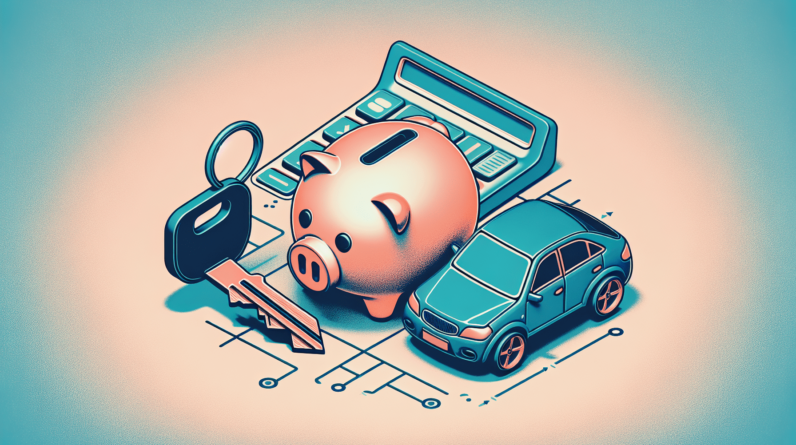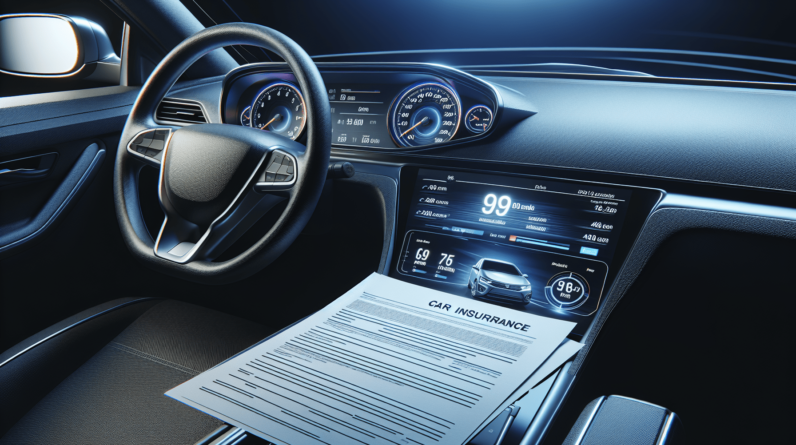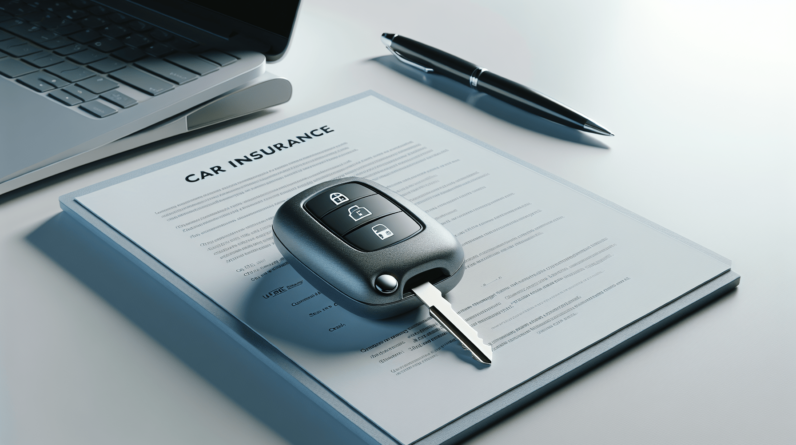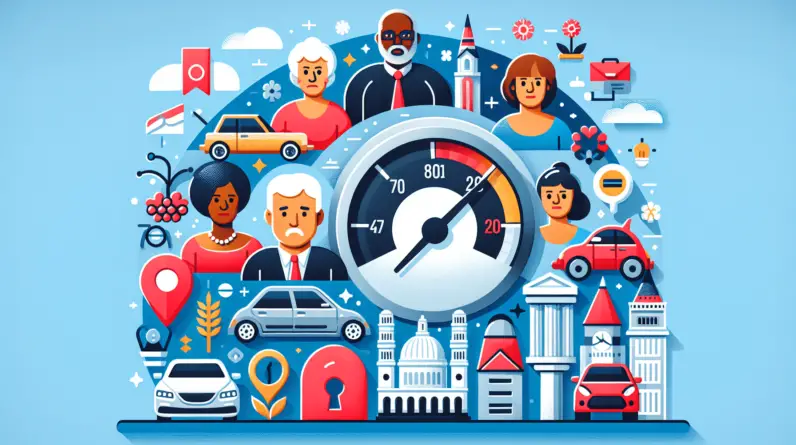
Have you ever wondered how car insurance rates are determined? It’s a common question that many drivers have, as understanding the factors that influence your insurance premium can help you make better decisions when it comes to coverage. From your driving record and age to the type of car you drive and even where you live, various factors are taken into consideration by insurance companies when calculating rates. By gaining insight into this process, you can navigate the world of car insurance with confidence and potentially save money along the way.
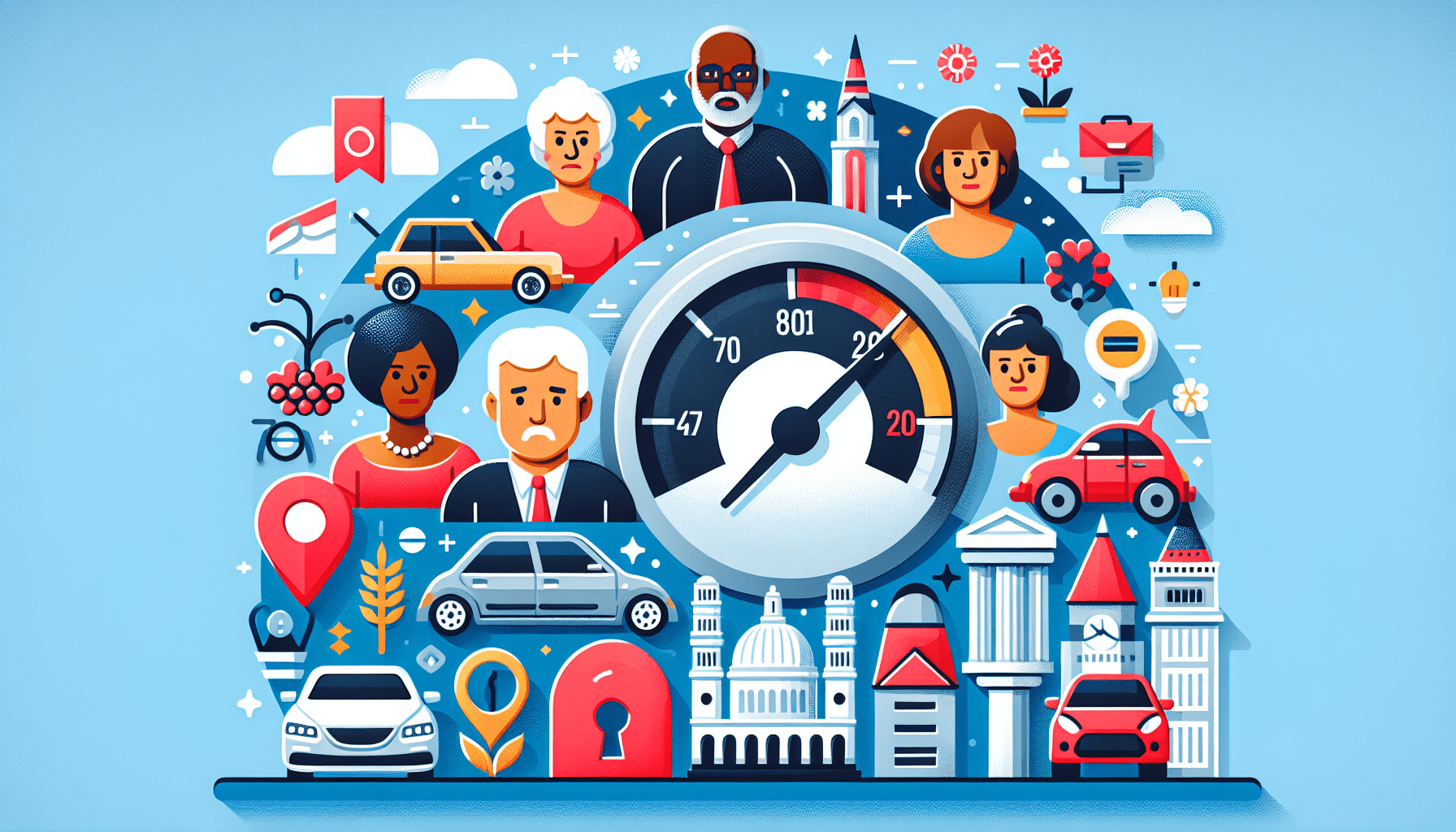
Factors Affecting Car Insurance Rates
Car insurance rates are determined by a variety of factors that insurance companies take into consideration. These factors can vary from person to person and can have a significant impact on the cost of your auto insurance premiums. It’s important to understand what these factors are and how they can affect your rates, so you can make informed decisions when it comes to insuring your vehicle. Let’s take a closer look at some of the key factors that affect car insurance rates.
Age
One of the most important factors that insurance companies consider when determining car insurance rates is age. Age can be a significant indicator of risk, as younger and older drivers tend to have higher accident rates. Generally, young and inexperienced drivers are considered to be riskier to insure, while middle-aged drivers and senior drivers may be considered less risky.
Impact of Age on Rates
The impact of age on car insurance rates can vary depending on the insurance company and the specific driver profile. Young drivers, typically those under the age of 25, are often charged higher premiums due to their lack of driving experience. Middle-aged drivers, who are generally more experienced and responsible, may enjoy lower rates. Senior drivers, on the other hand, may see an increase in rates due to age-related factors that can affect their driving abilities.
Young Drivers
Young drivers, especially teenagers, are often the most expensive to insure. They have less experience on the road and are statistically more likely to be involved in accidents. As a result, insurance companies consider them high-risk drivers and charge higher premiums accordingly. However, there are ways for young drivers to lower their rates, such as taking driver’s education courses and maintaining good grades.
Middle-aged Drivers
Middle-aged drivers, typically those between the ages of 30 and 60, tend to benefit from lower car insurance rates. These drivers have typically gained more experience and are seen as less likely to engage in risky driving behaviors. Insurance companies consider them to be responsible and reliable, leading to more favorable rates.
Senior Drivers
Senior drivers, aged 65 and older, may face higher insurance rates due to age-related factors that can potentially impact their driving abilities. As people age, physical changes can affect reaction times, vision, and hearing, making them more susceptible to accidents. However, not all seniors experience a significant increase in rates, as it largely depends on the individual’s driving history and overall health.
Gender
Gender is another factor that can influence car insurance rates. Insurance companies have historically considered gender as an important variable when determining risk levels and premium amounts.
Gender-Based Rates
Statistically, male drivers tend to be involved in more accidents and engage in riskier driving behaviors compared to female drivers. As a result, insurance companies have historically charged higher premiums for male drivers. However, it’s worth noting that some states have enacted laws prohibiting gender-based pricing, ensuring that insurance rates are solely based on other risk factors.
Male Drivers
Male drivers typically face higher insurance rates due to their higher accident involvement and more frequent engagement in reckless driving behaviors. These behaviors include speeding, aggressive driving, and more. Insurance companies perceive male drivers as a higher risk, leading to increased premiums.
Female Drivers
On the other hand, female drivers generally pay lower insurance rates compared to their male counterparts. Insurance companies view female drivers as less likely to engage in risky behaviors and be involved in accidents. This lower perceived risk translates into more affordable premiums for female drivers.
Marital Status
Marital status is another important factor that can influence car insurance rates. Insurance companies often consider married drivers to be more responsible and reliable compared to single drivers.
Married vs. Single
Married drivers are generally seen as a lower risk group by insurance companies. They tend to be more stable, have fewer accidents, and may have more experience on the road due to their longer driving history. This perception of lower risk often translates into lower insurance premiums for married drivers.
Effect on Rates
Single drivers, especially young singles, may face higher insurance rates compared to their married counterparts. However, once a driver reaches a certain age and demonstrates a clean driving record, the impact of marital status on car insurance rates may lessen.
Driving History
Perhaps one of the most significant factors that insurance companies consider when determining car insurance rates is your driving history. Your past driving behavior is a strong predictor of future actions on the road.
Clean Record
Having a clean driving record with no accidents, tickets, or other driving infractions can greatly impact your car insurance rates. Insurance companies reward safe drivers who have demonstrated responsible behavior while behind the wheel. If you have a record free of accidents and violations, you are likely to receive lower premiums.
Accidents and Tickets
On the other hand, if you have a history of accidents and traffic tickets, your car insurance rates are likely to be higher. Insurance companies view these incidents as red flags and consider you to be a higher-risk driver. Multiple accidents or speeding tickets can significantly increase your premiums.
Convictions
Certain convictions, such as driving under the influence (DUI) or driving while intoxicated (DWI), have a severe impact on car insurance rates. These convictions not only result in higher insurance premiums but may also lead to the requirement of an SR-22 certificate, which further increases the cost of coverage.
DUI/DWI
Driving under the influence or driving while intoxicated is a serious offense that puts lives at risk. Insurance companies view DUI or DWI convictions as an indication of high-risk driving behavior. As a result, drivers with such convictions can expect significant increases in their car insurance rates or even have their coverage dropped altogether.
Vehicle Type and Model
The type and model of the vehicle you drive can also influence your car insurance rates. Insurance companies take into account factors such as the make and model, safety features, age of the vehicle, engine size, and the value of the car.
Make and Model
Certain makes and models of vehicles are statistically more likely to be involved in accidents or stolen. Insurers factor in this information when determining rates. High-performance vehicles or luxury cars typically have higher insurance rates due to their higher-value parts and repair costs.
Safety Features
Vehicles equipped with advanced safety features, such as anti-lock brakes, airbags, and electronic stability control, are generally considered safer to drive. Insurance companies reward owners of these vehicles with lower premiums as they are less likely to result in severe injuries or costly damage in an accident.
Vehicle Age
The age of your vehicle can also impact your insurance rates. Older cars, especially those without advanced safety features, may be seen as higher risk by insurance companies. This is because they are more likely to sustain significant damage or be involved in accidents due to technological advancements in newer vehicles.
Engine Size
The size and power of the engine in your car can affect your car insurance rates. Vehicles with larger engines are often associated with increased speed and a higher likelihood of accidents. Insurers consider these factors when determining premiums and may charge higher rates for vehicles with larger engines.
Value of the Car
The value of your car is an important factor for insurance companies, as it determines the potential cost of repair or replacement in case of an accident. Vehicles with a higher value typically have higher insurance premiums, as the cost of repairs or replacement parts is likely to be more expensive.
Location
Where you live plays a significant role in determining your car insurance rates. Insurance companies take into account factors such as whether you live in an urban or rural area, state and city laws, crime rates, and the frequency of accidents in your location.
Urban vs. Rural
Urban areas tend to have higher car insurance rates compared to rural areas. This is because urban areas have higher population densities, leading to more vehicles on the road and a higher likelihood of accidents. Additionally, urban areas often have higher rates of car theft and vandalism.
State and City Laws
Car insurance rates can also be influenced by state and city laws. Some states have higher minimum coverage requirements or mandatory no-fault insurance laws, which can result in higher premiums. Additionally, high-risk areas with stricter traffic laws may lead to higher insurance rates.
Crime Rates
High crime rates in your area can impact your car insurance rates. Areas with higher rates of car theft and vandalism are considered riskier to insure. Insurance companies factor in these crime rates when determining the cost of your premiums.
Frequency of Accidents
The frequency of accidents in your location is another important consideration for insurance companies. Areas with a higher incidence of accidents will often have higher insurance rates due to the increased likelihood of filing claims. Insurance companies use historical accident data and statistics to assess the risk associated with insuring drivers in a particular location.
Credit Score
Your credit score can also influence your car insurance rates. Insurance companies may consider your credit-based insurance score, which is derived from your credit history, to assess your level of risk as a policyholder.
Credit-Based Insurance Score
A credit-based insurance score is a number that takes into account your credit history to predict the likelihood of you filing a claim. Insurance companies believe that individuals with good credit are less likely to engage in risky behavior, making them more responsible and reliable drivers.
Impact on Premiums
If you have a high credit-based insurance score, you are more likely to receive lower car insurance premiums. On the other hand, individuals with lower credit scores may be seen as higher risk and may face higher rates. It’s important to maintain good credit to potentially benefit from lower insurance premiums.
Coverage and Deductibles
The type of coverage you choose and the deductible you select can also impact your car insurance rates.
Coverage Options
Car insurance policies offer various coverage options, such as liability, collision, comprehensive, medical payments, and uninsured/underinsured motorist coverage. The more coverage you select, the higher your premiums are likely to be. However, having comprehensive coverage can provide valuable protection in the event of an accident or other covered incidents.
Deductible Selection
The deductible is the amount you must pay out of pocket before your insurance coverage kicks in. Higher deductibles can lower your insurance rates, as they shift a greater portion of the financial responsibility to you in the event of a claim. However, it’s essential to choose a deductible amount that you can comfortably afford to pay in case of an accident.
Insurance History
Insurance companies also take into account your insurance history when determining your car insurance rates.
Insurance Claims
Your past insurance claims history can have an impact on your rates. If you have a history of making frequent claims or have been involved in multiple accidents, insurance companies may consider you a higher risk. As a result, your premiums may be higher.
Continuous Coverage
Maintaining continuous car insurance coverage is important for establishing a good insurance history. Gaps in coverage, whether due to cancelation or non-renewal of a policy, can lead to higher rates. Insurance companies view individuals with continuous coverage as more responsible and reliable drivers.
Cancellation/Collateral Loss
If your car insurance has been canceled due to non-payment or other reasons, insurance companies may see you as a higher risk and charge higher rates. Such cancellations may be considered a reflection of financial instability or irresponsible behavior, resulting in increased premiums or difficulty in finding coverage.
In conclusion, car insurance rates are influenced by a variety of factors such as age, gender, marital status, driving history, vehicle type, location, credit score, coverage options, deductible selection, and insurance history. It’s important to be aware of these factors and how they can impact your premiums. By understanding these factors, you can make informed decisions when selecting car insurance coverage and potentially take steps to decrease your rates. Always remember to compare quotes from multiple insurance providers to find the best coverage at the most affordable price.


